Route of the City of Heraklion SEE ALL AVAILABLE ROUTES
Heraklion, the capital and most important commercial and economic centre of the island, has all the characteristics of a major city moving at a modern pace.
From a small harbour of Minoan Knossos, it was elevated in the 16th century into the most important Venetian port in the Eastern Mediterranean, acquiring strong fortifications that survive to this day in excellent condition.
Venetian monuments are interspersed through the old city, reminiscent of its peak, such as the Basilica of Agios Markos, the Loggia, Morosini fountain and the harbour Fortress.
The city centre features the Archaeological Museum, the second largest in Greece and one of the most important in the world, breathing life into Minoan culture and the history of Crete from the Neolithic to the Roman era. The Agia Ekaterini Museum includes one of the most important collections of icons from the Cretan School of Hagiography, while the Historical Museum features numerous exhibits from the island’s recent history.
There are numerous churches with remarkable architecture and historical value throughout the city of Heraklion.
The Holy Metropolitan Church of Agios Minas, the smaller and older Church of Agios Minas and the Holy Church of Agia Ekaterini Sinaiton (which also functions as a Museum of Holy Icons and Relics of the Holy Archdiocese of Crete), next to the building of the Archdiocese of Crete, is the ideal starting point for a religious itinerary through the city of Heraklion, which also includes the Holy Church of Panagia Stavroforon, the Holy Sinaitic Glebe of Agios Mattheos, the Holy Church of Agios Titos (where the Head of Saint Titus, the first Bishop of Crete, is kept), the Holy Church of Agios Petros Dominikanon and the Cave Church of Agios Fanourios.
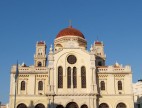
Metropolitan Church of Agios Minas (St. Menas)
The big church of St. Menas, to the northeast of the small one, was built between 1862–1895 by a practical architect from Epirus, Athanasios Mousis, with frequent contributions of the monasteries and donations from hundreds of Christians, as can be noted from the church’s manuscript books of donations. It is an eclectic monument whose architectural […]
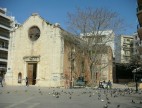
Agia Ekaterini (St. Catherine)
In the historic centre of Heraklion, next to the Metropolitan Church of Agios Minas, only the catholicon of the Old Sinaitic Monastery of Saint Catherine remains. Until 1669, when Crete was sacked by the Ottomans, Agia Ekaterini Monastery was one of the premier religious and intellectual foundations of Orthodoxy. A major monastic centre, it contributed […]
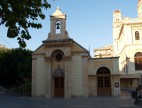
Old Metropolitan Church of Agios Minas (St. Menas)
This is the ‘small’ church of St. Menas and the Pantanassa (Most Holy Queen of All), with its intricate, gilded, wood-carved chancel screen and its valuable 18th century icons painted by renowned Cretan hagiographers. The church is linked to a bloody incident in the city’s history, as it was the site where, in June 1821, […]
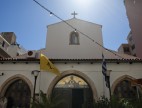
Panagia ton Stavroforon (Mother Mary of the Crusaders)
The Mother Mary of the Crusaders is part of a Latin monastery of the Crusaders (Crosecchieri), the remaining structures of which no longer survive. It is a three-aisled basilica with an elevated nave. It was destroyed by German bombs during the Battle of Crete in 1941 and was restored in 1956.
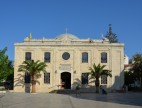
Agios Titos (St. Titus)
The church of St. Titus was the largest and most magnificent church in the city during the 2nd Byzantine era, serving as the Metropolis of the Diocese of Crete. During the era of Venetian rule, it served as the seat of the Latin Archbishop, while during the Ottoman era, it was converted into a mosque, […]


